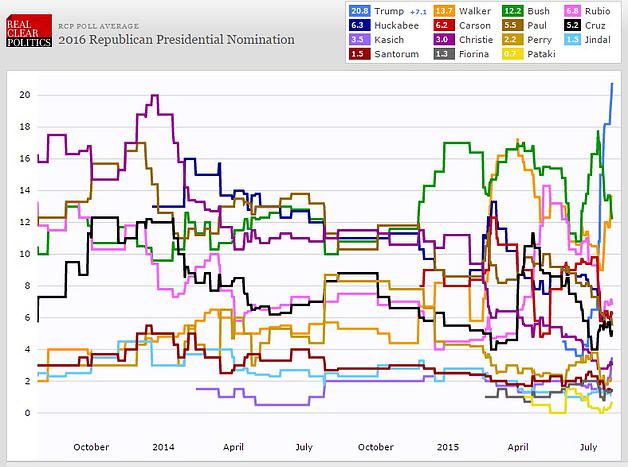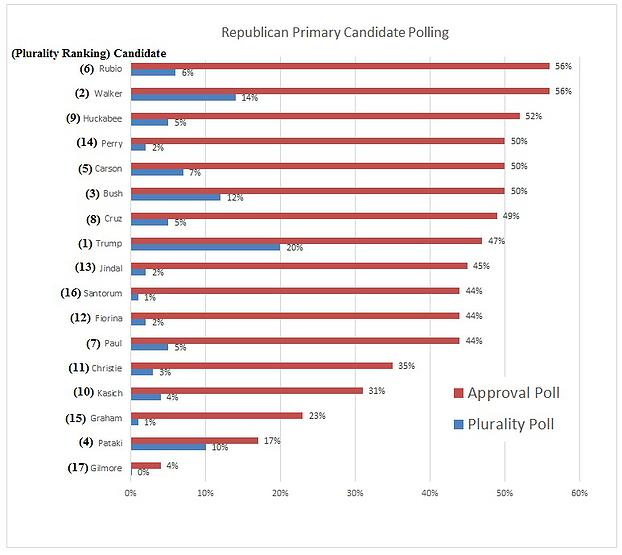Pollsters Strike Out as GOP Fields Enough Candidates to Fill 2 Baseball Teams
The Republican Party is now one candidate short of fielding two baseball teams. And they’re scratching their heads over the current frontrunner—Donald Trump—a candidate even the Koch brothers don’t support. Trump leads his nearest opponent by 5 percentage points according to the Real Clear Politics (RCP) average over the last month.
And it’s not just Trump. The whole field behaves wildly. Just look at this figure from RCP:
The polls get more chaotic as additional candidates enter the field. So why is that?
The reason our polls behave strangely is because they mirror our (also strange) voting method, a choose-one system called plurality voting/ first past the post. Our ubiquitous choose-one approach is commonly recognized as a dud among voting theorists. We recently even gave it a top-5 list for why it was so bad.
Part of why our choose-one method fails in polling is because it limits the information you can give. Go ahead. Try to envision giving less information than choosing one candidate. You can’t do it.
Because poll respondents can only choose one candidate, overlapping platforms find their vote divided. And it doesn’t take much to change the outcome—as we learned in the 2000 election.
Add a couple baseball teams’ worth of candidates from the same party and you end up with pure ridiculousness. It’s crazy that any media would imply these polls are meaningful. They’re only as meaningful as their elections that use the same voting method—which is not meaningful at all.
Fortunately, there’s a voting method that avoids this craziness: approval voting. It works by letting voters choose as many candidates as they want, the equivalent of a thumbs up or a thumbs down for each candidate.
FiveThirtyEight caught on by saying that our current polling supports a Nickelback-like candidate—referring to a rock band adored by few and despised by many. Unfortunately, FiveThirtyEight stopped short of appreciating that all U.S. voting elects Nickelback-like candidates.
To address the crazy polling results, FiveThirtyEight used approval polls from the Huffington Post Pollster. Along with their other numbers, we’ll use the approval polls below as a proxy for how approval voting would look:
You’ll notice Trump’s drop from first to eighth, though his numbers aren’t terrible (a CNN poll has him doing even better). Rubio and Walker are more noticeably in the lead. Because respondents could approve of as many candidates as they wanted, there’s no division of support between candidates (i.e. vote splitting).
At the moment, however, it doesn’t seem to matter whom the Republicans nominate. According to a CNN poll, both Democrats Sanders and Clinton can beat any Republican one-on-one.
Of course, a one-on-one scenario assumes only two general election candidates, a picture distorted by our choose-one voting method—along with debate exclusion and restrictive ballot access laws.
Editor's note: This article originally published on The Center for Election Science's blog on July 31, 2015, and has been modified slightly for publication on IVN.






